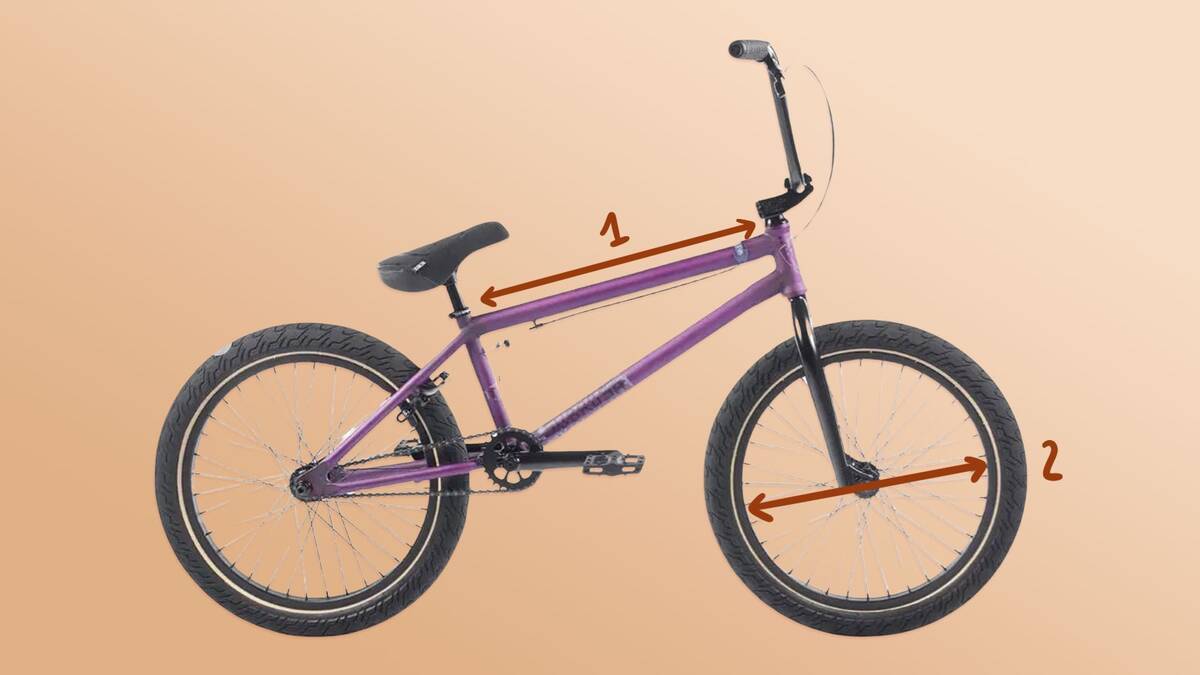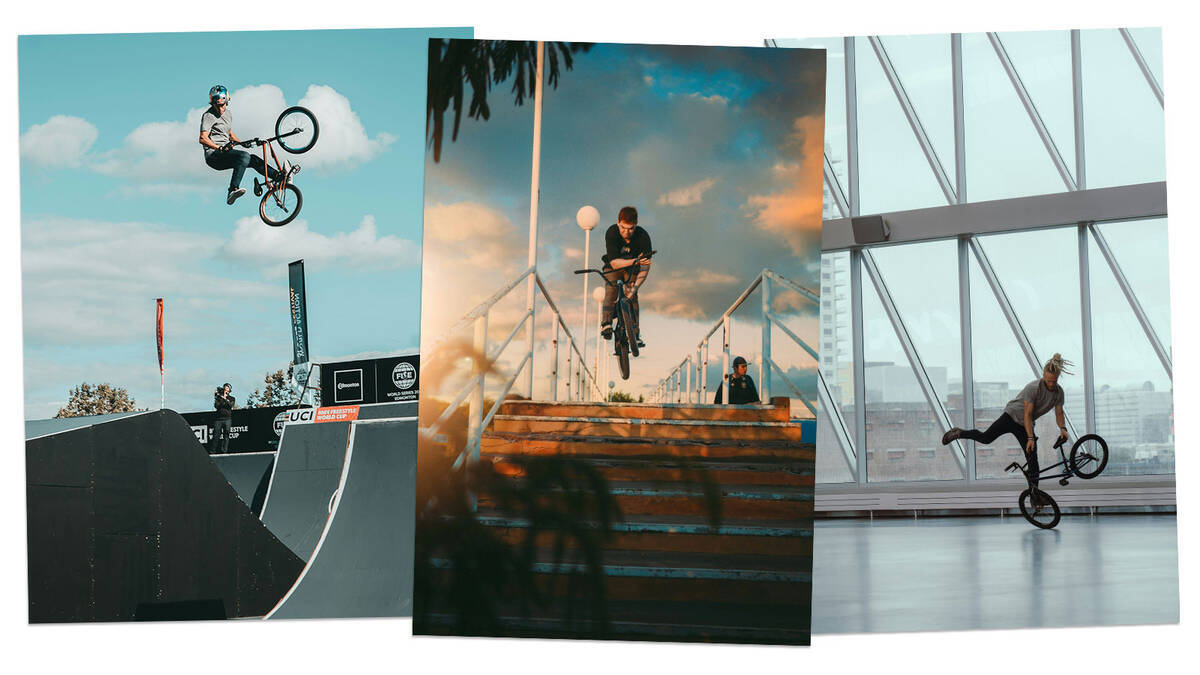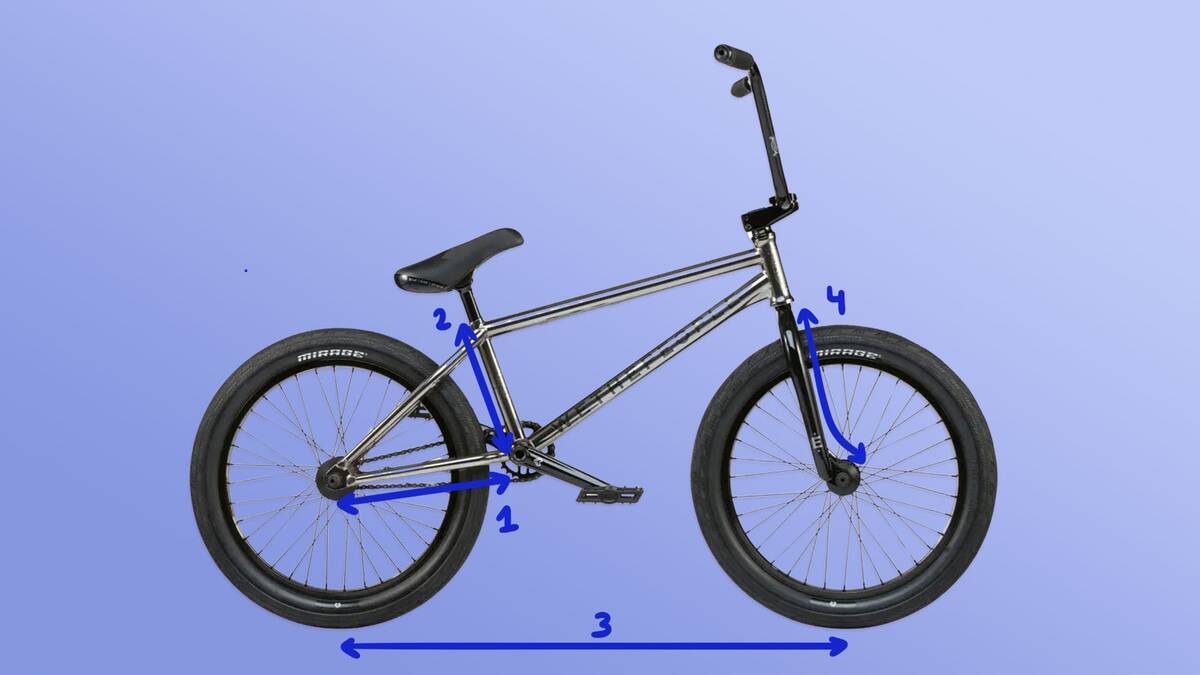Guide for Purchasing Complete BMX Bikes
Selecting a complete BMX bike involves careful thought about various factors to ensure it caters to your unique requirements and tastes. Here’s our detailed guide for acquiring complete freestyle BMX bikes.
Identifying a complete BMX bike that fits your requirements need not be a complicated task. By examining the detailed product specifications and adhering to the size charts available for each bike in our collection, you should be able to make a well-informed decision. The subsequent sections provide further insights to help direct your decision-making process.
Overview
Is Investment in Complete BMX Bikes Justifiable?

If you're starting out, we suggest opting for a complete bike rather than assembling one yourself. A good quality complete bike will offer more value for your money, and you can subsequently upgrade parts of the bike as you see fit.
For experienced riders with particular tastes, exploring some of the premium complete BMX bikes within our range would be beneficial. Investing in a complete bike with specifications that satisfy your needs will provide substantial value.
In conclusion, complete BMX bikes are decidedly worth it if you take the time to choose one that aligns with your needs.
We offer a selection of high-quality complete freestyle BMX bikes, spanning from low-cost setups suitable for beginners to pro-level bikes consisting of top-tier aftermarket components. Browse through our selection:
BMX Bike Dimensions – Which BMX Bike Size is Optimal?

1. Top tube length 2. Wheel diameter
Securing the correct size BMX involves matching it perfectly to your height, style of riding, and preferences.
For all freestyle BMX disciplines, the typical wheel diameter is 20 inches, even for bikes suitable for adults. Nonetheless, freestyle bikes with 22 and 24-inch wheels are also available.
The smaller wheels facilitate agility and are ideal for trick-performing on freestyle BMX bikes. Individuals of smaller stature or children interested in trick-centric freestyle riding might require even smaller wheel sizes. Children's BMX bike sizes vary from 12 to 18 inches based on their age and height.
If you possess a taller frame or desire a bike for casual cruising with occasional tricks, a 22 or 24-inch freestyle BMX might serve your purpose. Nevertheless, these bikes are less nimble or enjoyable for intricate tricks in skateparks or on streets due to their larger wheels.
An additional crucial element in BMX sizing is the top tube length, frequently ranging from 19.5 to 21 inches for freestyle BMX bikes. Taller riders may discover a longer top tube to be more comfortable.
Utilise the BMX size chart below for broad guidance on selecting the appropriate BMX size:
| Rider Age | Rider Height (cm & inches) | Wheel Size (inches) | Top Tube Length (inches) |
| 3-5 years |
95 - 112 cm / 37 - 44" |
12” | 12” |
| 5-7 years |
112 - 126 cm / 44 - 49" |
14” |
13” |
| 7-9 years |
126 - 138 cm / 49 - 54" |
16” | 15” |
| 9-11 years |
138 - 149 cm / 54 - 58" |
18” | 17” |
| 10-12 years |
145 - 160 cm / 57 - 63" |
20” | 19.5 - 20.25" |
| 11-13 years |
150 - 168 cm / 59 - 66" |
20” | 20 - 20.5" |
| 13-15 years |
160 - 175 cm / 63 - 69" |
20” | 20.25 - 20.75" |
| 15-17 years |
175 - 183 cm / 69 - 73" |
20” | 20.75 - 21" |
| over 183 cm / 73" tall |
183 cm + / 73” + |
20” | 21" + |
Note: The chart serves as a general reference. A rider's style significantly influences correct BMX sizing. For instance, an adult focusing exclusively on flatland BMX might opt for a top tube up to two inches shorter than the recommendations above.
Freestyle BMX Riding Styles – Which Freestyle Bike Type Should I Choose?

Freestyle BMX is divided into disciplines like park, street, and flatland BMX. This section delves into specifications significant when selecting a bike aligned to a specific riding style. Considering your favoured riding style when selecting a complete BMX is always wise.
We suggest a versatile BMX for beginners to help master basic skills and identify preferences over time.
BMX Street Bikes
Street BMX riding focuses on technical manoeuvres such as grinding rails and ledges, jumping staircases, and executing tricks in street locations. Much like other urban sports, street BMX emphasises engaging creatively and enjoyably with the urban architecture.
- Shorter Chainstay/Wheelbase: Street BMX bicycles typically feature shorter chainstays for enhanced manoeuvrability and responsiveness.
- Taller Seat Tube: Street cyclists usually favour taller seat tubes, making it simpler to tuck the saddle between the legs when doing tricks.
Individuals with an interest in the technical side of street BMX require a swift, responsive, and easily manoeuvrable setup.
BMX Park Bikes
Park BMX is conducted in skateparks with obstacles specifically designed for freestyle tricks. These parks allow for practising air tricks and tackling areas that replicate street obstacles. Park BMX is highly versatile, allowing a mix of different styles.
- Longer Chainstay/Wheelbase: Park riders often opt for a longer rear end for stability on larger ramps and higher speeds.
- Lower Frame: Shorter seat tubes facilitate easier leg movement over the frame during air tricks and tail whips.
If park riding, air tricks, and transitions are what you enjoy, a setup that is stable with a shorter standover height will be preferable.
Flatland BMX Bikes
Flatland BMX only needs a flat area like a car park or town square. A quality flatland BMX bike should have a geometry that facilitates spins and tricks at slow speeds. It must be lightweight, simple to balance, and very responsive.
- Smaller and Lower Frames: Smaller frames are beneficial for agility and simple handling. Shorter top tubes and chainstays result in a quick and responsive setup, while shorter seat tubes reduce interference during tricks.
- Pegs on All Wheels: Flatland setups often include pegs on all four wheels, offering endless trick possibilities.
- Zero-Offset Fork: Provides direct pressure transfer from handlebars to the front wheel, aiding balance.
- Gyro Brakes: These brakes prevent cables from tangling during tricks.

1. Chainstay 2. Seat Tube 3. Wheelbase 4. Wheel Offset
If flatland is your focus, seek these features. Street riders interested in flatland tricks might consider elements such as slightly shorter offset forks or adding extra pegs.
Key Specifications When Selecting a Complete BMX

When selecting a complete BMX bike, it is beneficial to pick a model that can seamlessly accommodate high-grade aftermarket parts for future upgrades. Consider these specs:
- Bottom Bracket and Cranks: Bikes with American bottom brackets and one-piece cranks tend to be less durable and are typically lower quality. Selecting a bike with MID bottom brackets makes finding durable crankset upgrades easier.
- Integrated vs. Non-Integrated Headsets: Integrated headsets with sealed bearing cartridges offer greater longevity and better upgrade potential compared to non-integrated headsets with open ball bearings.
- Driver Hub vs. Single-Speed Freewheel Hub: Driver hubs are easier to maintain and more durable than freewheel hubs. Most aftermarket freestyle sprockets are designed for optimal gearing ratios with 9T rear sprockets; thus, a 9T driver hub offers greater flexibility for future upgrades.
These aspects are worth evaluating when comparing various bikes. A robust freestyle BMX bike is essential for trick performance, and preparing for upgrades is a prudent approach.
If you are considering enhancements to your bike and require guidance on fitting new parts, refer to our detailed guide:
